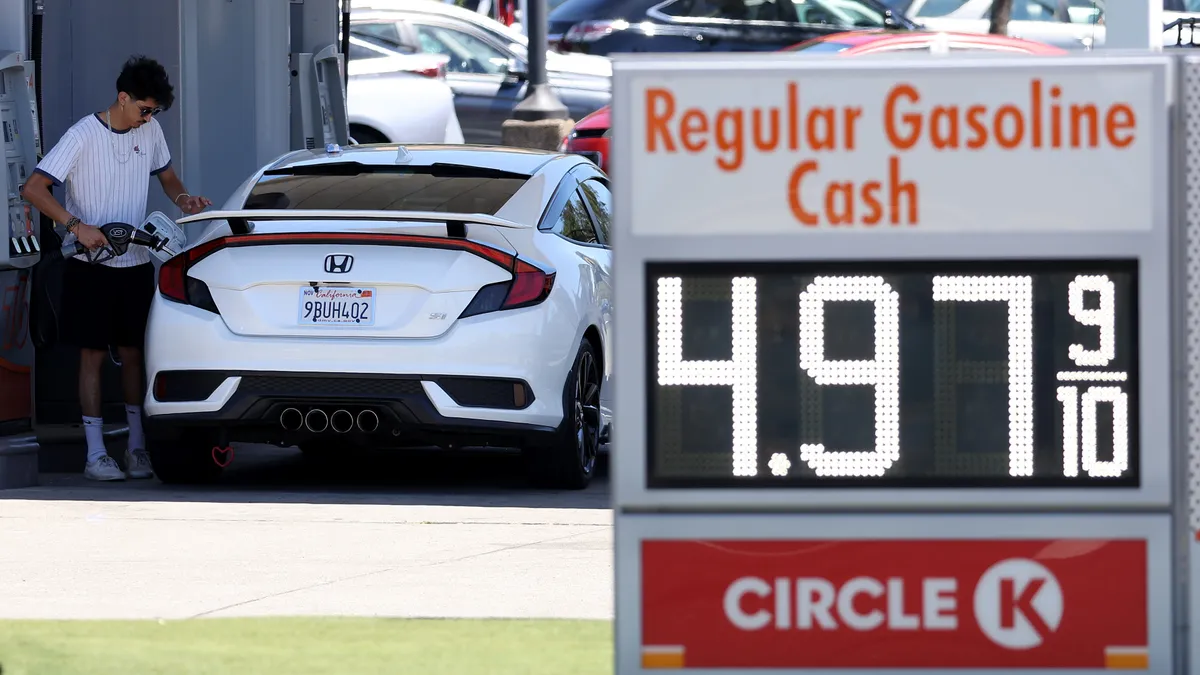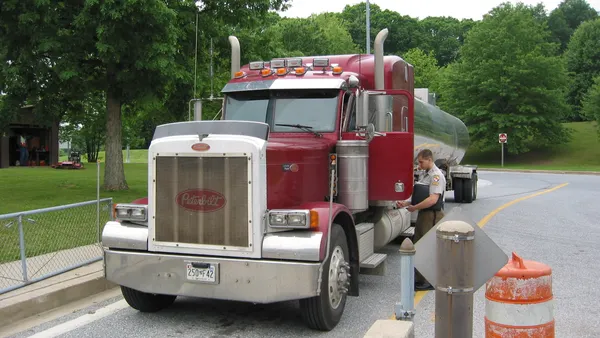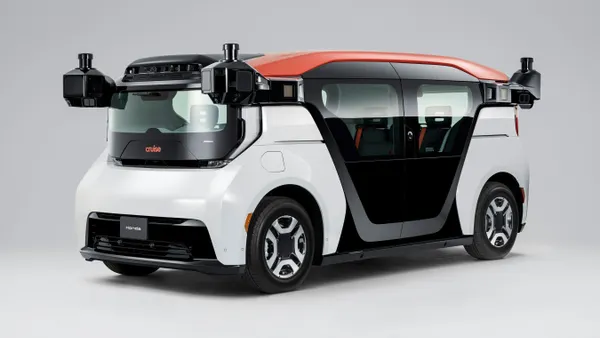Dive Brief:
- The National Highway Traffic Safety Administration proposed new fuel economy standards July 28 that ask automakers to achieve a corporate average fuel economy of nearly 58 miles per gallon by 2032.
- The agency recommended that fuel efficiency increase 2% annually for passenger cars and 4% for light-duty trucks starting in model year 2027. But it’s considering more aggressive targets.
- NHTSA also proposed a 10% annual fuel economy improvement for commercial vehicles from 8,500 to less than 14,001 pounds from model year 2030 through 2035.
Dive Insight:
The proposal is part of the Biden administration’s efforts to lower climate pollution and encourage the transition to zero-emission vehicles, especially electric vehicles. NHTSA said the net benefits of the proposal exceed $18 billion.
“CAFE standards have driven the auto industry to innovate in improving fuel economy in ways that benefit our nation and all Americans,” NHTSA Acting Administrator Ann Carlson said in a statement. “The new standards we’re proposing today would advance our energy security, reduce harmful emissions, and save families and business owners money at the pump.”
In April, the U.S. Environmental Protection Agency proposed tailpipe emissions standards, essentially requiring two-thirds of new vehicles to be zero emission. NHTSA said it would work with the EPA to ensure its proposed CAFE standards don’t conflict with the EPA rule, making it easier and less expensive for automakers to comply with it.
“That’s encouraging. Conflicting and overlapping rules are complex and expensive. If an automaker complies with EPA’s yet to be finalized greenhouse gas emissions rules, they shouldn’t be at risk of violating CAFE rules and subject to civil penalties that levy costs on consumers and manufacturers,” said John Bozzella, president and CEO of the Alliance for Automotive Innovation, a lobbying group representing automakers in the U.S.
NHTSA estimates it would cost $932 per vehicle for automakers to comply with the proposed fuel economy standards for light-duty vehicles and $131 per vehicle for heavy-duty pickups and vans.
“Though NHTSA does not take electric and other alternative fuels into account in setting the standards, manufacturers may use all available technologies — including advanced internal combustion engines, hybrid technologies and electric vehicles — for compliance,” the agency said in a statement.
The agency said the recommended policy would save consumers more than $50 billion in fuel costs and reduce U.S. gasoline consumption by over 88 billion gallons by 2050. It would also lower total greenhouse gas emissions by over 900 million tons by 2050. That’s “the equivalent of taking more than 233 million vehicles off the road from 2022 through 2050,” NHTSA said.
However, those figures may vary, as CAFE depends on the mix of vehicles that automakers sell. If they sell more fuel-efficient cars, the average fuel economy will increase. But automakers’ average fuel economy will decline if they sell more light-duty trucks and SUVs, which are usually less efficient.
In addition, real-world fuel economy is usually 20-30% lower than CAFE, NHTSA said. That means fuel economy would likely range from 40.5 to 46.2 mpg rather than the CAFE target of 57.8 mpg in model year 2032.
For model years 2024-2026, the fleet average of new vehicles must be 49 mpg by 2026 under current law.












